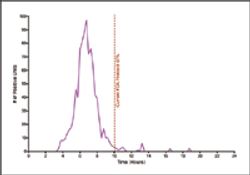A Look Ahead for 2010
Some predictions for contract services in 2010.
It's customary to begin a new year with some predictions. We don't honor that custom every year, but given what the contract services industry went through in 2009, it seemed appropriate to do so.
Jim Miller
A slow recovery in business activity. The pharmaceutical services industry enters 2010 after enduring some of the most difficult market conditions ever faced by contract research organizations (CROs) and contract development and manufacturing organizations (CDMOs) in 2009. Unfortunately, the factors that created these problems have not fully resolved, and there may be new challenges. Funding remains uncertain for small and mid-sized drug companies, which account for 35% of all research and development (R&D) spending and a bigger share of outsourced expenditures. The companies formed by the big mergers of 2009 (Pfizer–Wyeth, Merck–Schering-Plough, Roche–Genentech, and Abbott–Solvay) are still sorting out what capacity, capabilities, and development candidates to keep. The fundamental transformation of the biotechnology/pharmaceutical business model continues, as companies continue to cut overhead, inventories, and pipelines in response to patent expiries and the new economics of drug development.
CROs and CDMOs report some improvement in requests for proposals and new project awards, but we expect 2010 to start off slow. By the second half, we could see some pickup as the overall economy improves and the financial sector strengthens. We don't think the turnaround will be robust, but it will at least mark a halt to the revenue declines experienced in 2009.
Big Pharma becomes a competitor to the CDMOs. The major biotechnology and pharmaceutical companies will be a nuisance to CDMOs. Pfizer (New York) and Abbott (Abbott Park, IL) are already active sellers of their excess commercial manufacturing capacity. We expect at least one more major company to launch a formal effort to establish itself as a contract manufacturer. Also, we continue to see companies sell spare specialized capacity such as biologics manufacturing.
Big Pharma may also be a problem in the market for clinical development and manufacturing services. We think there may be significant overcapacity for the manufacturing of clinical-trial materials resulting from the trimming of development pipelines and the big mergers. While we don't expect the global biotechnology and pharmaceutical companies to start selling clinical manufacturing services, we may see them bring in-house work that they would otherwise outsource, including manufacture of placebos and comparative agents.
We don't foresee this being a long-term problem for the contract services industry. Executives at the giant companies created by last year's megamergers need time to work through the implications of what they have created, and the further rationalization of these development and manufacturing operations will be second-order considerations. The major drug companies are more committed than ever to reducing fixed assets and fixed costs. They will get around to closing down their redundant capacity and outsourcing more of their development activities in the next several years.
Intensifying competition for development services business. While we expect demand conditions to slowly improve, we expect competition to intensify. Contract service providers are expanding their service offerings to drive their own revenue growth by capturing more of available expenditures. They are also trying to improve their positioning as potential preferred providers for the major drug companies, which tend to favor companies with broader capabilities. So we will see contract analytical laboratories offering formulation and manufacturing services, and providers of active pharmaceutical ingredient development services adding formulation-development and dose-manufacturing capabilities. Not all of these companies will be successful, but we expect the effort to negatively impact the smaller service providers that lack specialized expertise.
Acquisitions of contract service providers. Look for acquisitions of contract service providers in 2010. Acquisitions almost always pick up after a recession as financing becomes more available, and companies that survived seek to exploit their relative strength. One factor driving deals will be the effort to increase service offerings across both capabilities and geography. Companies will also seek to gain economies of scale by increasing their size and generating savings in back-office activities and sales and marketing.
Private-equity investors have been active buyers of contract-services companies in recent years, and we expect that to continue despite the somewhat diminished attractiveness of the business. One interesting play among some private-equity firms is to view formulation-development CDMOs as platforms for creating specialty pharmaceutical companies. The rationale is that the formulation and drug-development expertise of these companies, combined with their manufacturing capabilities, makes them ideal vehicles for transformation into product-development companies. When it comes time to exit, valuations for companies with drug portfolios are almost always greater than valuations for service companies, so there is strong incentive for pursuing that strategy.
Jim Miller is president of PharmSource Information Services, Inc., and publisher of Bio/Pharmaceutical Outsourcing Report, tel. 703.383.4903, fax 703.383.4905, info@pharmsource.com, www.pharmsource.com.



